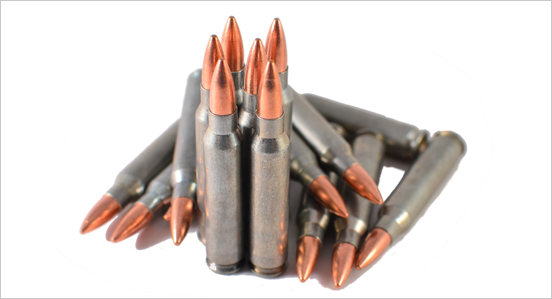Steel-Cased Ammo: versatile, cost-effective, misunderstood
Steel-cased ammo comes in many calibers, is cost-effective and versatile. Even so, it's not unusual to hear people bad-mouth it because of issues from many years ago.
Where does the bad rap about steel-cased ammo come from?
For years, steel-cased ammo was either non-coated or lacquer-coated. Non-coated ammo had corrosion issues. Lacquer-coated ammo could sometimes leave behind a residue.
The truth about steel-cased ammo!
For many years, a lot of the steel-cased ammunition that was imported into the US was very old military surplus ammunition which was much dirtier than new production steel ammo.
In a lot of the new production ammunition, a polymer coating is applied to ensure consistent feeding and reduce dirtiness in semi-auto firearms.
Many of the previous concerns about corrosion and residue were addressed by applying various coatings which are generally either polymer or lacquer. Unfortunately, these previous concerns had been around for decades and it's hard to change opinion overnight.
Today's steel-cased ammo can be found with a variety of coated cases for lubricity and more reliability like lacquer, polymer, zinc and brass coated. Because of the way it is manufactured, today's steel-cased ammo performs well thru most firearms.

Quick Notes About Steel-Cased Ammo
Compared to brass, steel-cased ammo tends to be less expensive.
Steel is less malleable than brass and, in some guns, does not create as tight of a seal. This, in turn, can cause steel ammo to run less clean than brass.
With some firearms, steel may extract better than brass.
Steel is not malleable and cannot be reshaped easily to its original dimensions. Therefore, it is not able to be reloaded.
Steel is not a slick metal, therefore, it requires a coating. Polymer allows steel cases to be shot and extracted from most firearms just like traditional brass cases.



